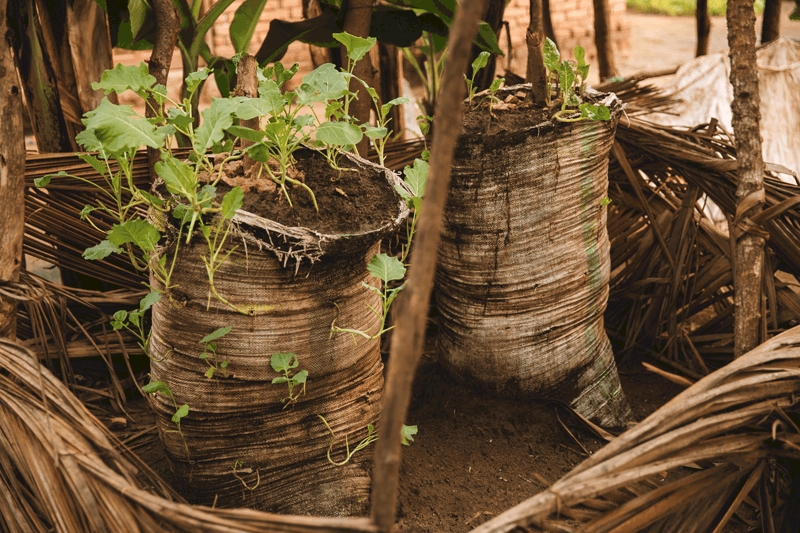This is the third entry of a ten-part blog series celebrating the Lab’s 10th anniversary. The series will share valuable insights and lessons learned over the past decade, exploring practical knowledge gained from accelerating climate finance solutions in emerging markets. See all entries here.
August 6, 2024

Private capital is critical to unlocking the trillions needed to combat climate change. However, billions in climate finance are untapped due to a perfect storm of challenges: small deal sizes, nascent asset classes, track record restrictions, and investor concerns over emerging markets. To realize this potential, climate investments must become more attractive. There is a pressing need to create a pipeline of investable solutions that better align the risk-return profiles of climate finance instruments with investors’ expectations.
For the past 10 years, the Global Innovation Lab for Climate Finance (the Lab) has helped climate finance innovators build compelling investment profiles for climate finance instruments by addressing financial risks and ensuring a solid impact thesis. The Lab goal is to create a bankable pipeline of structures that channel capital into climate projects through financial innovation to de-risk transactions and drive investments to underfunded sectors and geographies.
The Lab’s approach involves designing and structuring diverse financial mechanisms, from private equity and infrastructure funds to results-based financing models, to align with the specific needs of climate projects and investor preferences. The Lab’s portfolio of 68 instruments incorporates different strategies to break down barriers to investment. These include using blended finance to match different financial actors with their appropriate risk-return profiles; cost-effective models like pay for performance to address the lack of upfront financing; credit guarantees and insurance schemes like parametric indexed or guaranteed annuities; aggregation models to overcome small ticket size issues; among others.
This blog showcases specific examples from our portfolio, highlighting their strategies for building compelling investment profiles, ultimately leading to them mobilizing millions of private climate investments.
Building a pipeline of investable climate solutions
The Climate Resilience and Adaptation Finance & Technology Transfer Facility (CRAFT) is an investment strategy developed within the Lab in 2017 that led to the Lightsmith Climate Resilience Fund, an innovative private equity fund focused on climate resilience and adaptation. Leveraging a blended finance structure, the fund invests in growth-stage technology companies offering adaptation solutions like weather analytics and drought-resilient seeds. By targeting underserved markets, the fund helps customers assess and manage climate risks while reducing costs. In 2021, the fund successfully closed at USD 186 million and has since deployed over 60% of its capital.
The Lab played a crucial role in developing the fund’s investment thesis and strategy, including designing its blended finance structure to attract a diverse investor base. By mitigating risks and aligning investment opportunities with investor expectations, the Lab helped position the fund for success, drawing participation from governments, impact investors, and commercial investors across different tranches of the capital stack.
CRAFT stands out as a global pioneer in adaptation finance. It has attracted significant attention and demonstrated the potential for systemic change by engaging commercial investors. The fund is now actively deploying capital in various deals, demonstrating its robust theory of change and impact.
Innovation with rigorous scrutiny
Another example is the Blockchain Climate Risk Crop Insurance, designed to attract capital to smallholder agriculture in Africa, a historically underserved sector. Endorsed by the Lab in 2019, the instrument is a digital platform for standardized parametric crop insurance that aims to increase smallholder farmers’ resilience by offering affordable insurance and accelerating claims processing following a catastrophic weather event. Each insurance policy is plugged into smart contracts on a blockchain and indexed to local weather, facilitating timely and fair payouts.
The Lab supported building the financial structure by helping proponent Etherisc prove their unique concept. The Lab’s working groups provided a platform for rigorous scrutiny and constructive feedback, posing hard questions that helped the implementers refine their approach. This process prepared the team to confidently address inquiries from potential investors and other partners, ensuring that the investment thesis was robust and well-articulated. By doing so, the Lab helped the team anticipate and address potential concerns, making the project more appealing to investors.
The instrument has been implemented in various regions in Kenya, onboarding over 17,000 farmers and paying out policies to roughly 6,000. While still in its early stages, this project highlights the potential for creating substantial positive change for vulnerable communities.
Similarly, the P-REC Aggregation Facility (PAF), from the Lab’s 2021 cohort, taps into a challenging market. PAF is a project finance vehicle that monetizes renewable energy projects’ environmental and socioeconomic attributes across 13 fragile African countries. It does so through the origination and aggregation of Peace Renewable Energy Credits (P-RECs), a high-quality International Renewable Energy Certificate (I-REC) generated from climate-vulnerable and energy-poor countries.
PAF covers developers’ up-front construction costs in exchange for P-RECs generated by the project over 10 years. When construction is finalized and as energy is generated, PAF will recover initial financing and generate returns by selling the P-RECs to corporate buyers. PAF aims to provide catalytic financing to local developers and attract international renewable energy investment into conflict-afflicted regions. The proponent, Energy Peace Partners, has closed several independent transactions, including with Google and Microsoft in the Democratic Republic of Congo and Block in South Sudan.
Adapting for impact and scale
Flexibility is key to the Lab’s work, which constantly finds new ways to streamline or standardize its processes for broader use by climate finance actors. Similarly, the Lab helps proponents adapt their investment thesis to new applications.
Cooling as a Service (CaaS) illustrates how an instrument can be adapted for new sectors addressing specific market needs. CaaS is a servitization model that decreases energy consumption and emissions from cooling systems by making efficient technologies more accessible. As CaaS gained initial traction, the proponents realized the need for cooling solutions in underserved African and South Asian markets.
The instrument evolved into a new model: Cooling as a Service with a Virtual Cold Chain Assistant (CaaS with VCCA). This new pay-per-service model helps smallholder farmers access sustainable cooling facilities. Farmers pay per kilogram of food stored in cold rooms, avoiding up-front investments. They also have access to a mobile application that uses physics-based modeling to simulate how crops age based on real-time sensor data and inform farmers’ post-harvest decisions.
CaaS replicated their model using the mechanism designed through the Lab’s process and as part of a replication program. The Lab helped them adapt this approach to the sustainable agriculture sector, specifically for customized solutions in India, allowing them to scale their model within this segment.
Following this success, CaaS proponents began exploring how to replicate their model in other sectors. Essentially, their strategy involves identifying different market needs and then adapting and iterating the model developed through the Lab to address them.
Building a blueprint for the future
By strengthening the instruments’ investment profile, the Lab creates blueprints and structures that different institutions and stakeholders can adopt. The Lab focuses on driving investments from a diverse group of stakeholders, helping proponents develop a pipeline that can be standardized, replicated, and scaled.
Take, for example, the 2015 Lab instrument Energy Savings Insurance (ESI), a model that incorporates an insurance agreement as a performance guarantee mechanism and a package of complementary measures providing technical capacity and access to capital. ESI encourages climate investment by mitigating the downside risk for SMEs investing in energy-efficient technologies. ESI was initially piloted in Latin America, then adapted by different parties and replicated across Europe and Asia.
Lab instruments undergo an intense period of stress testing and guidance from experts, which helps proponents strengthen their models to become easily scalable and replicable once they hit the market. Proponents can improve their instruments’ investment profile and attract risk-averse investors looking to park their money in safer places. By doing so, the Lab works to unlock the full potential of the private sector to catalyze the trillions needed each year to drive mitigation and adaptation action at the scale and speed necessary to meet international climate targets.
Check out the entire Lab 10th Anniversary blog series
1. Five strategies to break down barriers to private climate investment
2. How a well-designed theory of change guides clearer social and environmental modeling
3. Building a compelling investment case for climate finance instruments
4. Making the most of concessional capital: The Lab’s blended finance approach
5. Enhancing the appeal of small-ticket investments with Sustainable Energy Bonds in India
6. Why Climate Adaptation Notes didn’t take off – and the lessons I learned
7. How Brazil’s Green FIDC became the Lab’s champion for private investment mobilization
8. Adaptation finance: Six key steps for structuring instruments that deliver results
9. Beyond box-ticking: Why gender-responsive climate finance is effective climate finance
10. Emerging trends, opportunities, and challenges in climate finance (17 September)
BONUS: A decade of the Lab: Finding a balance between climate finance and actionability (25 September)






